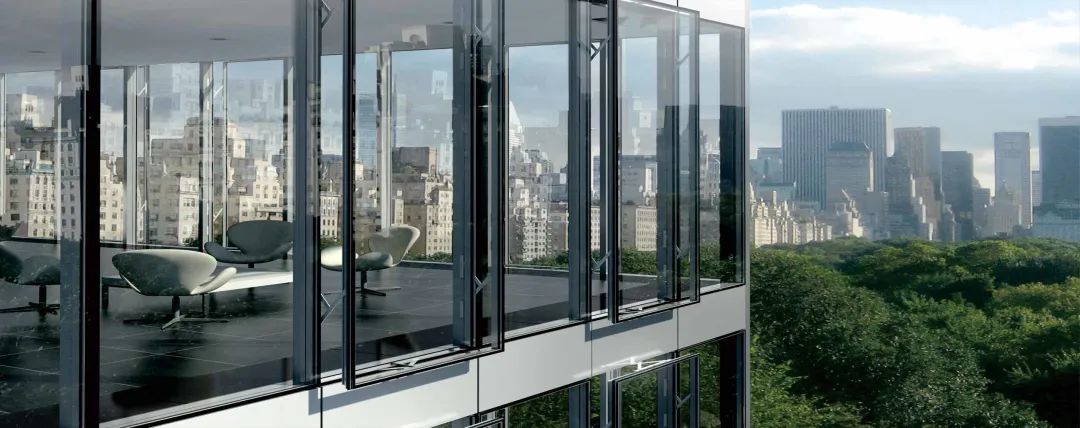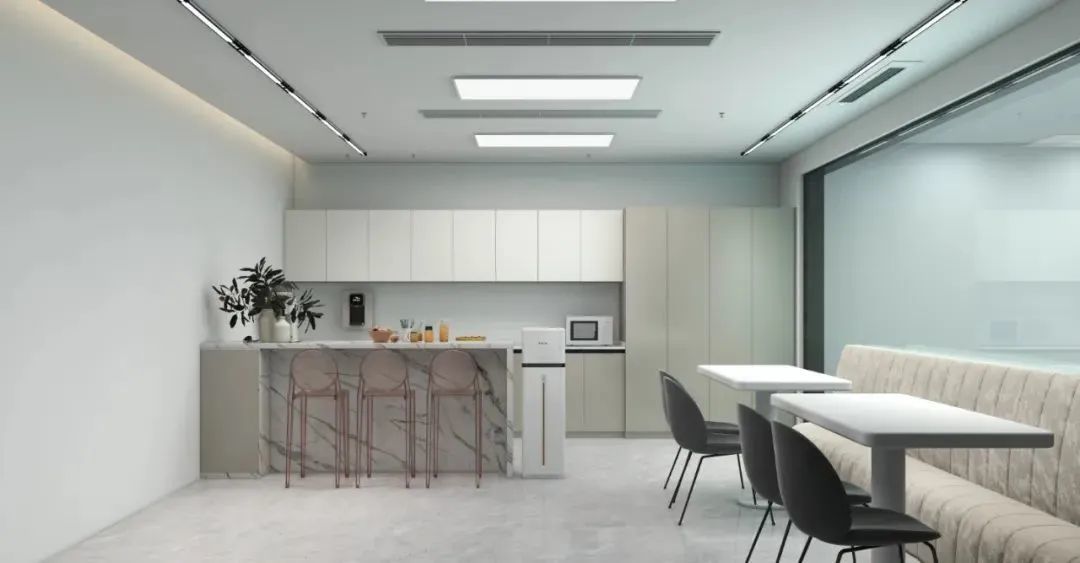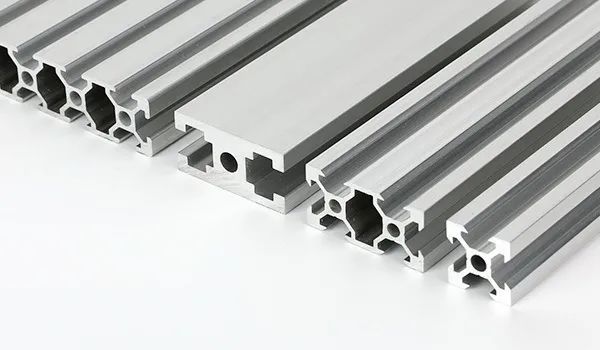[Knowledge of Doors and Windows] How many questions can you answer correctly about 12 professional knowledge of door and window profiles and glass?
Release time:
2018-12-15
1. please briefly describe the process flow of aluminum profile? answer: aluminum ingot-aluminum rod-aluminum rod preheating-extrusion-cooling-straightening-sizing-artificial aging-surface treatment (oxidation, spraying, etc.)-packaging-transportation. 2. Please briefly describe the difference between 6063-T5 and 6063-T6? The difference between 6063-6063A? Is there any difference in price between the four? Answer: T6 means that when the aluminum profile is extruded, it is cooled by water cooling or liquid nitrogen, T5 means that it is cooled by air or naturally cooled in air. A represents the different types and contents of alloys, resulting in the tensile strength of 6063A being higher than that of 6063. T6 is slightly higher than T5 and 6063A is higher than 6063 in price. 3. What is the process of aluminum mold opening? Answer: drawing design -- tracing -- confirmation by both parties -- mold design -- machining -- quenching -- wire cutting -- quenching -- assembling -- nitriding -- testing the mold on the machine. Answer: Generally speaking, the conventional size of aluminum profiles is 6 meters, the maximum processing size is 7.2 meters, and the minimum processing length is 3.2 meters, but there are exceptions that CCTV has processed 12 meters long profiles. ● ● Glass aspect 5. The advantages and disadvantages of off-line LOW-E and on-line LOW-E? Answer: The advantages of on-line glass: it can be used as a single piece, can be laminated, can be bent steel, and the price is cheaper than off-line 20 yuan/square meter. Disadvantages: single color only high permeability and blue and gray two colors, prone to color difference, single glass insulation performance is poor. 6. Please briefly describe the advantages and disadvantages of tempered glass and semi-tempered glass. Answer: The strength of tempered glass is 4-5 times that of ordinary glass. After being broken, it becomes small particles and belongs to safety glass. Can withstand temperature mutation of 250-320 degrees. The disadvantage is that there is self-explosion, it cannot be cut, and the flatness is reduced after tempering. The strength of semi-tempered glass is between ordinary glass and tempered glass; it is not easy to explode; the flatness is good; but the heat resistance and impact resistance are inferior to tempered. 7. What are the thicknesses of glass that manufacturers can produce at present? What is the maximum size? Answer: ① At present, the commonly used glass thicknesses are: 3mm, 5mm, 6mm, 8mm, 10mm, 12mm, 15mm, 19mm, 22mm, 25mm. ②. Specifications of large plates in stock: 2440mm × 3300mm/3660mm, 2100mm × 3300mm/3660mm. ③. The pull-out length of float line (equipment limit, taking CSG as an example):6mm thick plate ≤ 5m;8mm thick plate ≤ 6m10mm thick plate ≤ 9m;12mm thick plate ≤ 9m15mm thick plate ≤ 10m;19mm thick plate ≤ 10m This is the design and processing size of the manufacturer's equipment, depending on the actual strength of glass, market and other factors. 8. What are the processing sizes of tempering, gluing, colored glaze, coating, hollow synthesis and other equipment at present? (Take CSG as an example) Answer: Tempering furnace: usually length × width = 6 meters × 2.4 meters, and the maximum length × width = 12 meters × 2.4 meters in the market at present. Autoclave: length x width = 7.8 m x 2.4 m. Color glaze line: length x width = 4.5 m x 2.4 m. Hollow line: length x width = 6m x 2.4 m. Usually length x width = 3.5 m x 2.4 m. Coating line: length x width = 6m x 2.4 m (the largest is currently only available in CSG). Usually length x width = 4.5 m x 2.4 m (standard). The common width of hollow aluminum frame is: 6mm, 9mm, 12mm, 16mm 9. What is the difference between hot bending and bending tempering, are they both safety glass? Answer: Hot bending glass is to heat the glass to the softening temperature, and then bend it by its own weight or external force and form it after natural cooling; Bending tempered glass is made of rapid air cooling with special equipment after bending molding; Hot bending glass does not belong to safety glass, bent steel glass belongs to safety glass. 10. What is the size range of hot bending and bending steel processing? Answer: ①. Because hot bending glass is made of mold processing, in principle, as long as the mold is made, the glass can be hot bent. ②. The minimum radius of the bent steel is 500mm, the maximum arc length is 3000mm, and the maximum height is 3000mm. But usually the minimum radius of the manufacturer is not less than 1500mm. 11. Can hollow LOW-E glass be bent? Is there any restriction if it can be done? Can double-piece laminated glass be LOW-E? Answer: ①. Due to heating when bending steel, the LOW-E layer will change when encountering high temperature, so LOW-E glass is generally not bent steel, but CSG and epithelial have made some adjustments to the process, and some colors can be bent steel. The bendable LOW-E of CSG are CES11-80S/TB, CEB14-50S/TB, CEB14-60S/TB and CEF16-50S/TB, which are colorless, light gray, cold gray and blue gray respectively. The bendable LOW-E of epithelium are YBE0180, YBE0152 and YBE0140, and the colors are colorless, light blue and silver gray respectively. ②. Unless laminated glass is used in conjunction with hollow glass to form hollow laminated glass, it cannot be used for the following reasons: a. The film will debond in contact with the LOW-E layer. B. LOW-E only with the hollow glass in order to heat insulation, the role of heat preservation to the extreme, there is no sense to use alone, it is better to use heat reflection coated glass. 12. Please briefly describe the causes of glass self-explosion and the main factors affecting glass self-explosion. How to reduce the glass self-explosion rate? Answer: ①. Due to the instability of nickel sulfide crystals in the glass, the volume of nickel sulfide crystals is changed when the external force is impacted or the temperature is changed, which causes the glass to be broken. The main factors causing the self-explosion are the temperature change, the existence of drilling and cutting angle and the external force. ②. The drilling and chamfering parts shall be chamfered to minimize the concentration of stress; the glass shall be hot-dipped.
1. Please briefly describe the processing process of aluminum profile?
Answer: aluminum ingot-aluminum rod-aluminum rod preheating-extrusion-cooling-straightening-sizing-artificial aging-surface treatment (oxidation, spraying, etc.)-packaging-transportation.
2. Please briefly describe the difference between 6063-T5 and 6063-T6? The difference between 6063-6063A? Is there any difference in price between the four?
Answer: T6 means that when the aluminum profile is extruded, it is cooled by water cooling or liquid nitrogen, and T5 means that it is cooled by air or naturally cooled in air. A represents the difference in type and content of alloy, resulting in the tensile strength of 6063A being higher than that of 6063. T6 is slightly higher than T5 and 6063A is higher than 6063 in price.
3. What is the process of aluminum mold opening?
Answer: Drawing design -- tracing -- confirmation by both parties -- mold design -- machining -- quenching -- wire cutting -- quenching -- assembling -- nitriding -- testing the mold on the machine.
4. What is the processing length of aluminum profiles?
Answer: Generally speaking, the conventional size of aluminum profiles is 6 meters, the maximum processing size is 7.2 meters, and the minimum processing length is 3.2 meters, but there are exceptions that CCTV has processed 12 meters long profiles.
● ● ●
Glass
5. The advantages and disadvantages of off-line LOW-E and on-line LOW-E?
Answer: The advantages of on-line glass: It can be used as a single piece, can be laminated with glue, can be bent steel, and the price is cheaper than off-line 20 yuan/square meter. Disadvantages: single color only high permeability and blue and gray two colors, prone to color difference, single glass insulation performance is poor.
6. Please briefly describe the advantages and disadvantages of tempered glass and semi-tempered glass.
Answer: The strength of tempered glass is 4-5 times that of ordinary glass; After being broken, it becomes small particles and belongs to safety glass. Can withstand temperature mutation of 250-320 degrees, but its disadvantages are self-explosion, inability to cut, and reduction of flatness after tempering. The strength of semi-tempered glass is between ordinary glass and tempered glass; it is not easy to explode; the flatness is good; but the heat resistance and impact resistance are inferior to tempered.
7. What are the thicknesses of glass that manufacturers can produce at present? What is the maximum size?
Answer:
① Currently, the commonly used glass thicknesses are: 3mm, 5mm, 6mm, 8mm, 10mm, 12mm, 15mm, 19mm, 22mm, 25mm.
②. Specifications of large plates in stock: 2440 mm × 3300 mm /3660mm, 2100 mm × 3300 mm /3660mm.
③. Float line can be pulled out of length (equipment limit, taking CSG as an example):
6mm thick plate ≤ 5 m;8mm thick plate ≤ 6 m
10 mm thick plate ≤ 9 m;12mm thick plate ≤ 9 m
15 mm thick plate ≤ 10 m;19mm thick plate ≤ 10 m
This is the design and processing size of the manufacturer's equipment, according to the actual strength of the glass, the market and other factors.
8. What are the processing sizes of the equipments such as tempering, gluing, colored glaze, coating and hollow synthesis at present? (Take CSG as an example)
A: Tempering furnace: usually length × width = 6 meters × 2.4 meters, and the maximum length × width = 12 meters × 2.4 meters in the market at present.
autoclave: length x width = 7.8 m x 2.4 m.
colored glaze line: length x width = 4.5 m x 2.4 m.
hollow line: length x width = 6m x 2.4 m.
is usually length x width = 3.5 m x 2.4 m.
coating line: length x width = 6m x 2.4 m (currently only available in South Glass).
is usually length x width = 4.5 m x 2.4 m (standard).
hollow aluminum frame is commonly used with widths of 6mm, 9mm, 12mm, 16mm
9. What is the difference between hot bending and bending tempering, and is it both safety glass?
Answer: Hot bending glass is to heat the glass to the softening temperature, and then bend it by its own weight or external force and form it after natural cooling; bent tempered glass is formed by rapid air cooling with special equipment after bending; Hot bending glass does not belong to safety glass, and bent steel glass belongs to safety glass.
10. What is the range of hot bending and bending steel processing dimensions?
A: ①. Because hot bending glass is made of mold processing, in principle, as long as the mold is made, the glass can be hot bent.
②. The minimum radius of the bent steel is 500mm, the maximum arc length is 3000mm, and the maximum height is 3000mm. But usually the minimum radius of the manufacturer is not less than 1500mm.
11. Can hollow LOW-E glass be bent? If so, are there any restrictions? Can double laminated glass be LOW-E?
Answer: ①. Because steel bending needs to be heated, the LOW-E layer will change under high temperature, so LOW-E glass is generally not bent, but CSG and Epithelial have made some adjustments to the process, and some colors can be bent. The bendable LOW-E of CSG are CES11-80S/TB, CEB14-50S/TB, CEB14-60S/TB and CEF16-50S/TB, which are colorless, light gray, cold gray and blue gray respectively. The bendable LOW-E of epithelium are YBE0180, YBE0152 and YBE0140, and the colors are colorless, light blue and silver gray respectively.
②. Laminated glass cannot be used unless it is used in conjunction with insulating glass to make hollow laminated glass. The reasons are as follows:
a. The film will deglue when contacting the LOW-E layer.
B. LOW-E only with hollow glass can the role of heat insulation and heat preservation be exerted to the extreme. It is meaningless to use it alone. It is better to use heat-reflective coated glass.
12. Please briefly describe the causes of glass self-explosion and the main factors affecting glass self-explosion. How to reduce the self-explosion rate of glass?
Answer: ①. Due to the instability of nickel sulfide crystals in the glass, the volume of nickel sulfide crystals is changed when the external force is impacted or the temperature is changed, which causes the glass to be broken. The main factors causing the self-explosion are the temperature change, the existence of drilling and cutting angle and the external force. ②. The drilling and chamfering parts shall be chamfered to minimize the concentration of stress; the glass shall be hot-dipped.
Contact Information
Customer Service Tel: +86-539-7177878
Mailbox: kemet@sdkemet.com
Zip Code: 273400
Address: Linyi City, Shandong Province
Copyright©2023 Kemet New Materials Technology Co., Ltd. All Rights Reserved





